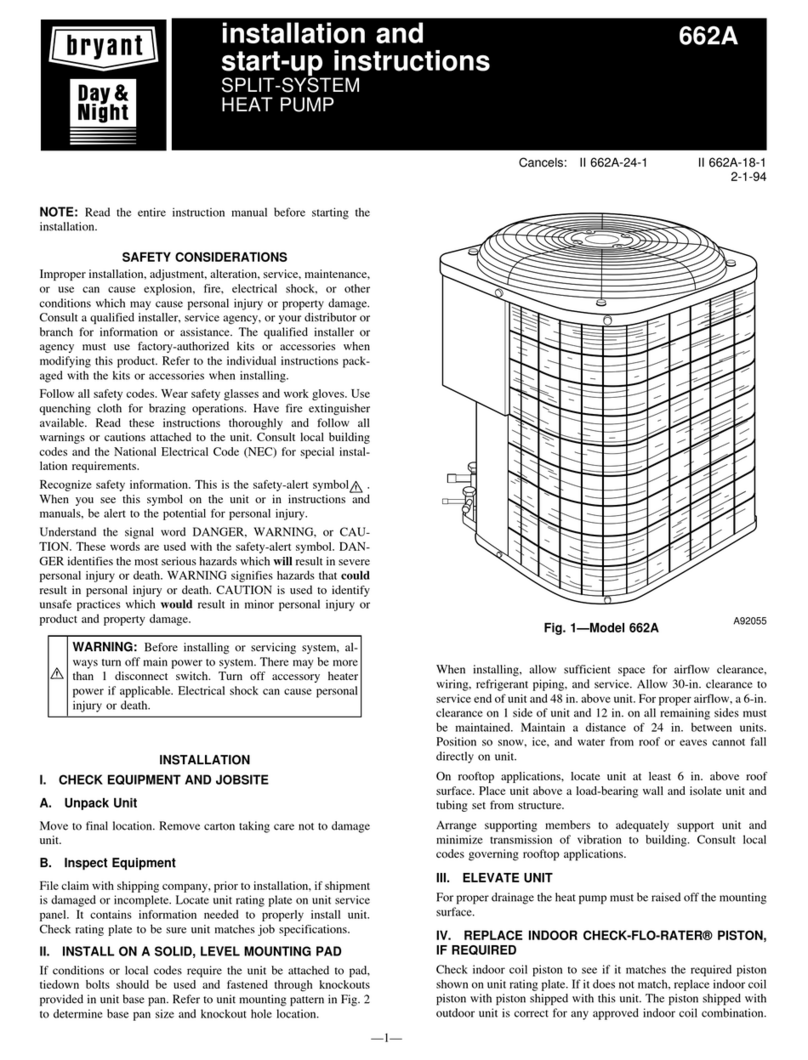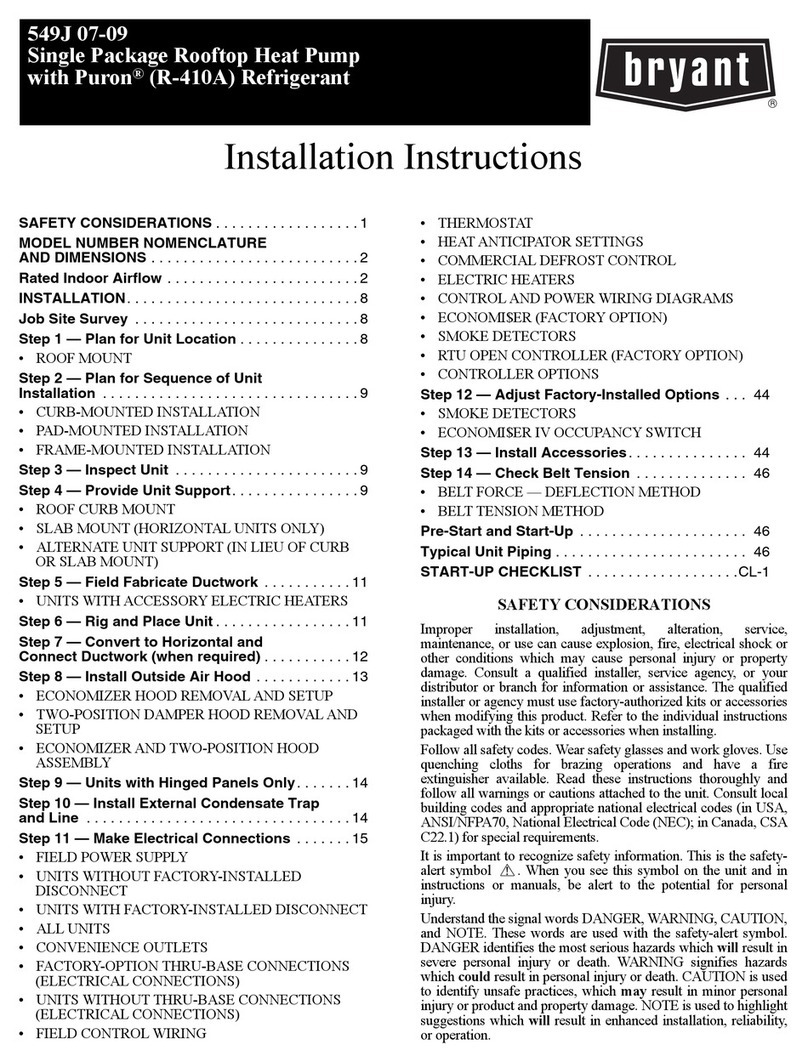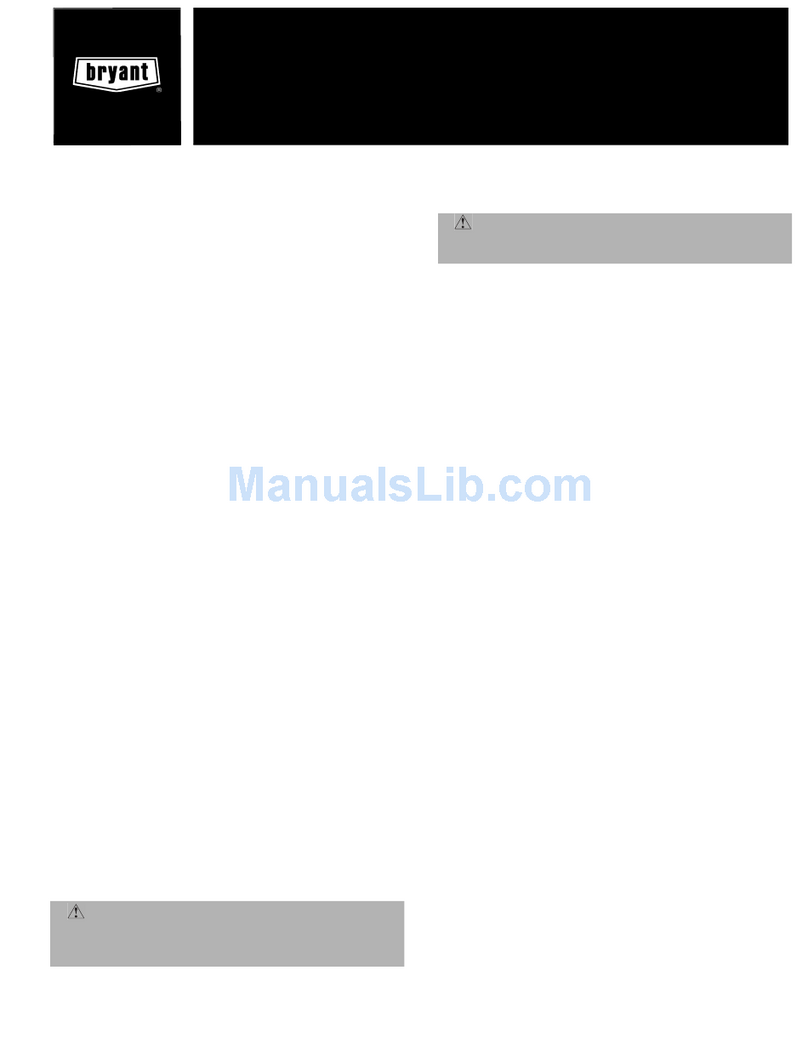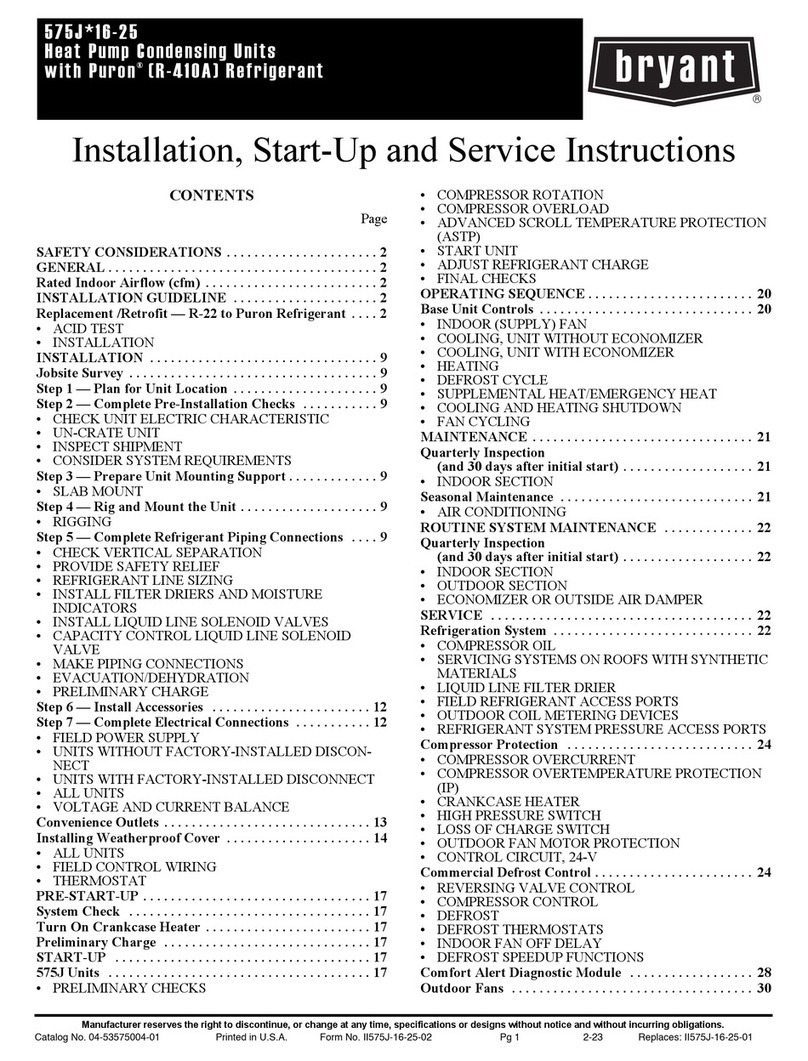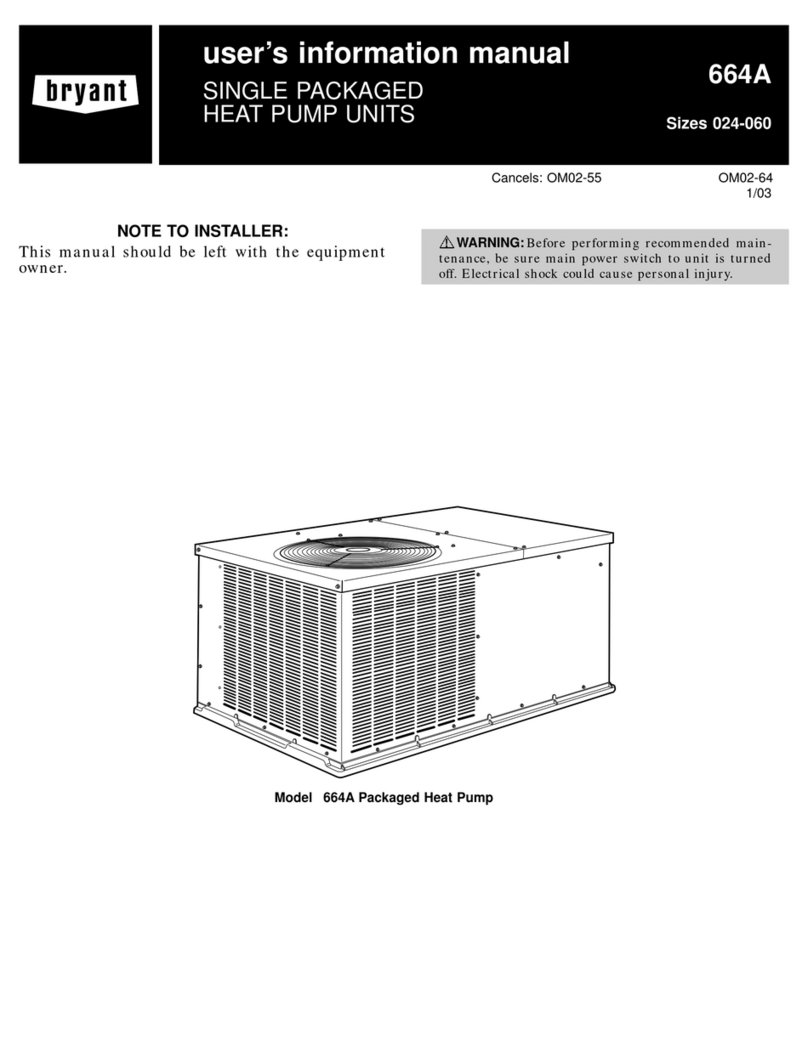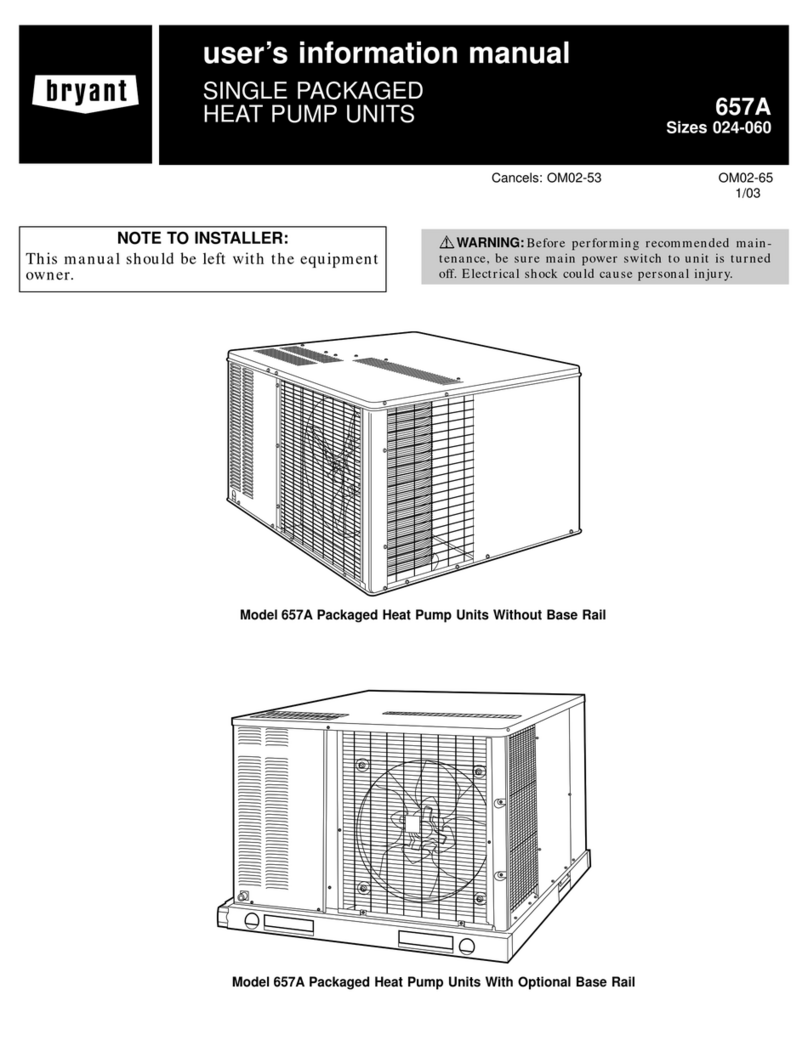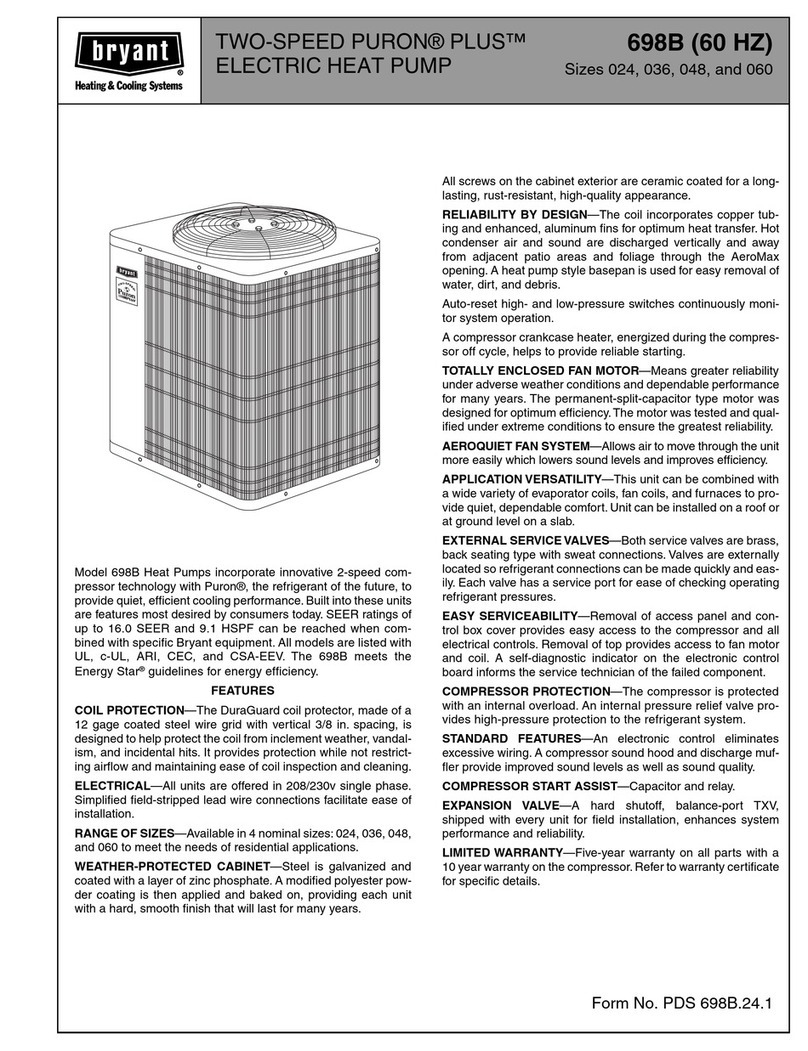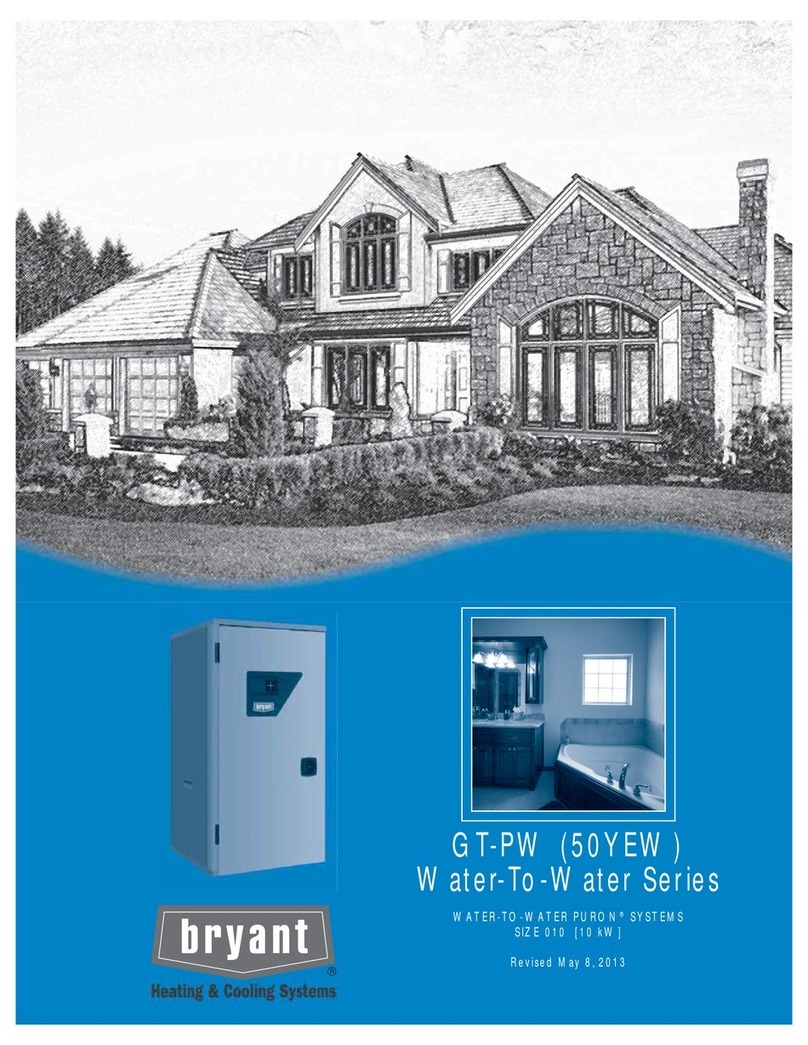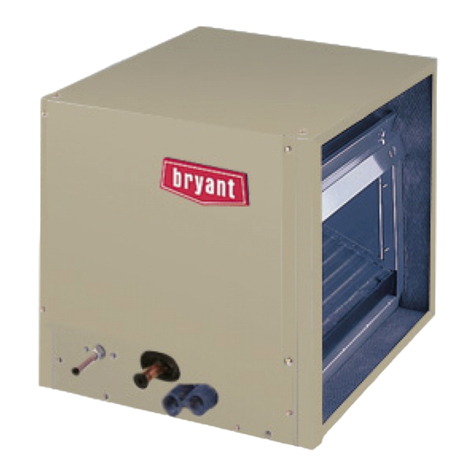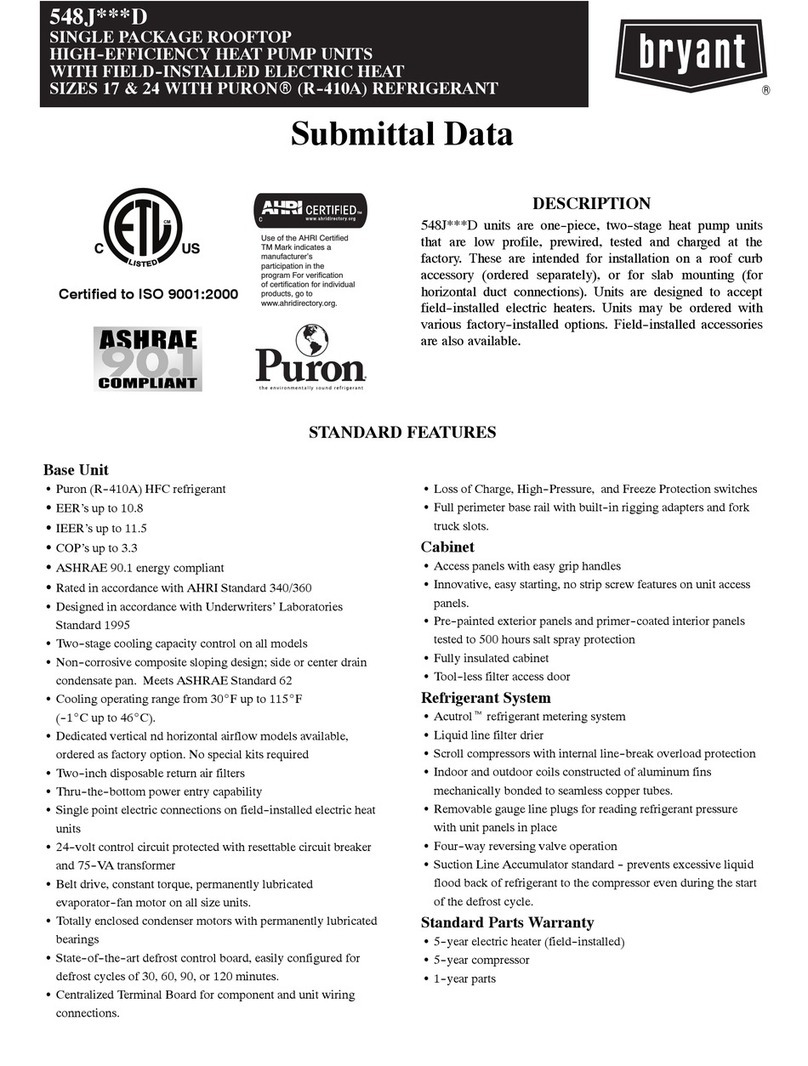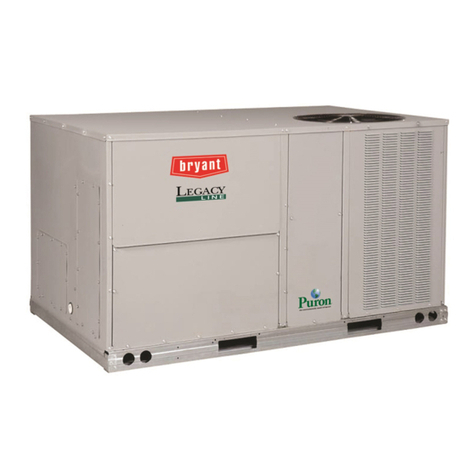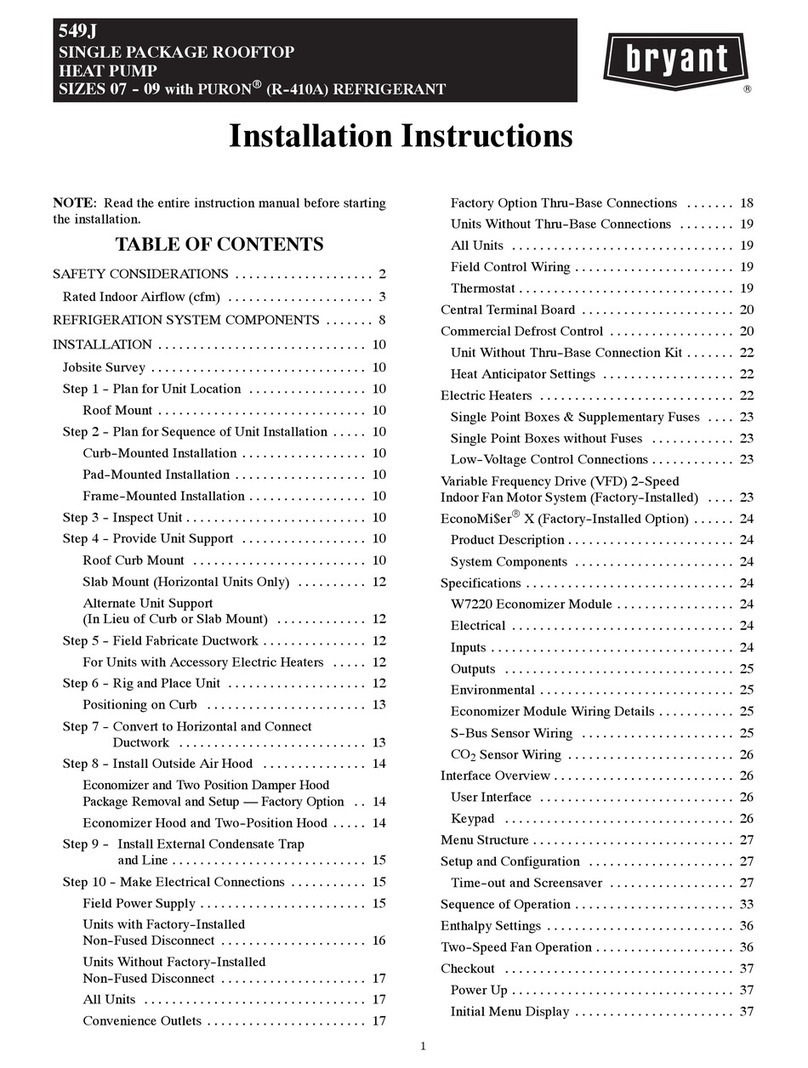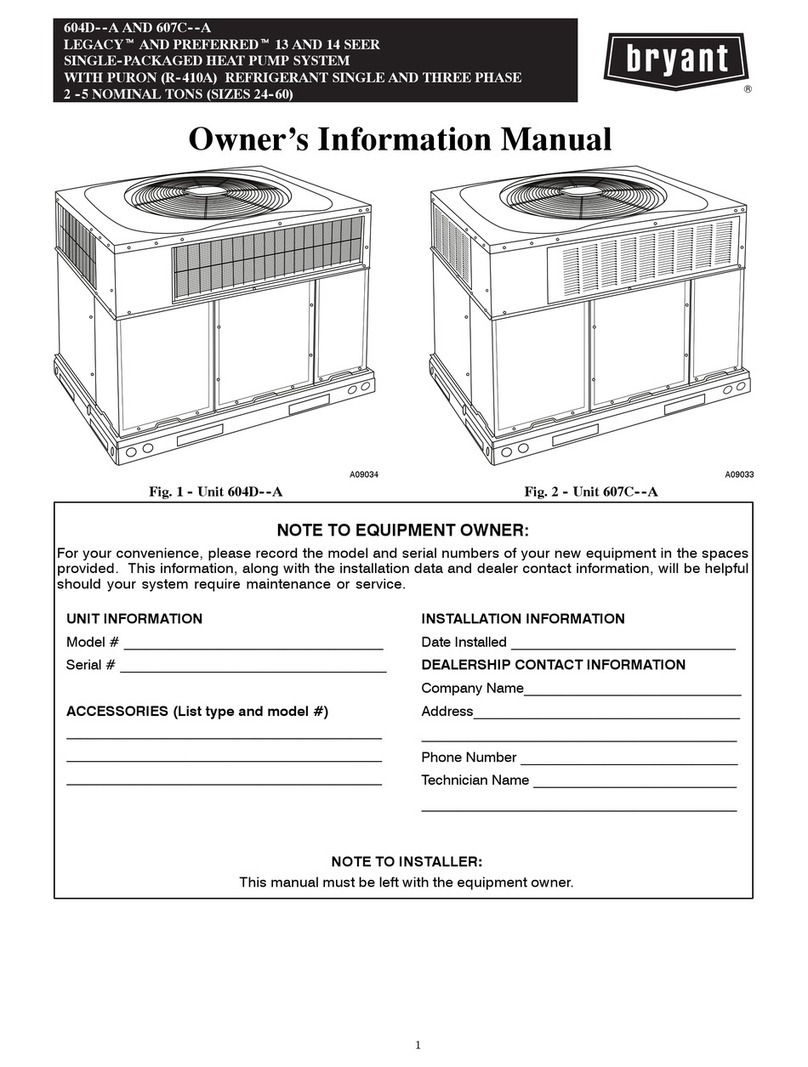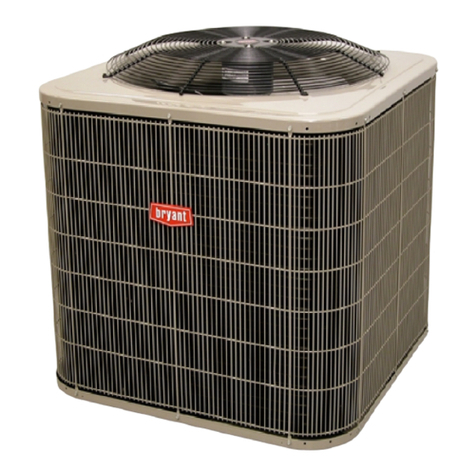
3. This installation must conform with local building codes
and with NEC (National Electrical Code). Refer to provin-
cial and local plumbing or waste water codes and other
applicable local codes.
WARNING: Before performing service or maintenance
operations on system, turn off main power to unit. Turn
off accessory heater power switch if applicable. Electrical
shock could cause severe injury or death.
CAUTION: Puron (R-410A) systems operate at higher
pressures than standard R-22 systems. DO not use R-22
service equipment or components on Puron (R-410A)
equipment. Ensure service equipment is rated for Puron
(R-410A)
INTRODUCTION
The 602B heat pump is fully self-contained and designed for
outdoor installation. (See Fig. 1) Standard units are shipped in a
horizontal-discharge configuration for installation on a ground-
level slab. Standard units can be converted to downflow (vertical)
discharge configurations for rooftop applications.
RECEIVING AND INSTALLATION
I. CHECK EQUIPMENT
A. IDENTIFY UNIT
The unit model number and serial number are stamped on the unit
identification plate. Check this information against shipping pa-
pers.
B. INSPECT SHIPMENT
Inspect for shipping damage while unit is still on shipping pallet.
If unit appears to be damaged or is torn loose from its anchorage,
have it examined by transportation inspectors before removal.
Forward claim papers directly to transportation company. Manu-
facturer is not responsible for any damage incurred in transit.
Check all items against shipping list. Immediately notify the
nearest Bryant Air Conditioning office if any item is missing. To
prevent loss or damage, leave all parts in original packages until
installation.
II. PROVIDE UNIT SUPPORT
A. ROOF CURB
Install accessory roof curb in accordance with instructions shipped
with curb. (See Fig. 5) Install insulation, cant strips, roofing, and
flashing. Ductwork must be attached to curb.
IMPORTANT: The gasketing of the unit to the roof curb is
critical for a watertight seal. Install gasketing material supplied
with the roof curb. Improperly applied gasketing also can result in
air leaks and poor unit performance.
Curb should be level to within 1/4 in. (See Fig. 6) This is necessary
for unit drain to function properly. Refer to accessory roof curb
installation instructions for additional information as required.
B. SLAB MOUNT
Place the unit on a solid, level concrete pad that is a minimum of
4 in. thick with 2 in. above grade. (See Fig. 7) The slab should
extend approximately 2 in. beyond the casing on all 4 sides of the
unit. Do not secure the unit to the slab except when required by
local codes.
C. GROUND MOUNT
The unit may be installed either on a slab or placed directly on the
ground if local codes permit. Place the unit on level ground
prepared with gravel for condensate discharge.
III. PROVIDE CLEARANCES
The required minimum service clearances are shown in Figs. 2 and
3. Adequate ventilation and outdoor air must be provided. The
outdoor fan draws air through the outdoor coil and discharges it
through the top fan grill. Be sure that the fan discharge does not
recirculate to the outdoor coil. Do not locate the unit in either a
corner or under an overhead obstruction. The minimum clearance
under a partial overhang (such as a normal house overhang) is 48
in. above the unit top. The maximum horizontal extension of a
partial overhang must not exceed 48 in.
IMPORTANT: Do not restrict outdoor airflow. An air restriction
at either the outdoor-air inlet or the fan discharge may be
detrimental to compressor life.
Do not place the unit where water, ice, or snow from an overhang
or roof will damage or flood the unit. Do not install the unit on
carpeting or other combustible materials. Slab-mounted units
should be at least 4 in. above the highest expected water and runoff
levels. Do not use unit if it has been under water.
IV. RIG AND PLACE UNIT
Rigging and handling of this equipment can be hazardous for many
reasons due to the installation location (roofs, elevated structures,
etc.)
Only trained, qualified crane operators and ground support staff
should handle and install this equipment.
When working with this equipment, observe precautions in the
literature, on tags, stickers, and labels attached to the equipment,
and any other safety precautions that might apply.
Follow all applicable safety codes. Wear safety shoes and work
gloves.
A. INSPECTION
Prior to initial use, and at monthly intervals, all rigging brackets
and straps should be visually inspected for any damage, evidence
of wear, structural deformation, or cracks. Particular attention
should be paid to excessive wear at hoist hooking points and load
support areas. Brackets or straps showing any kind of wear in these
areas must not be used and should be discarded.
B. INSTALLATION
1. Remove unit from shipping carton. Leave top shipping skid
on the unit as a spreader bar to prevent the rigging straps
from damaging the unit. If the wood skid is not available,
use a spreader bar of sufficient length to protect unit from
damage.
2. Position the lifting bracket assembly around the base of the
unit. Be sure the strap does not twist.
3. Place each of the 4 metal lifting brackets into the handholds
in the composite pan.
4. Thread lifting bracket strapping around bottom perimeter of
unit as follows:
a. Open lever of tension buckle (ratchet type).
b. Feed strapping through tension buckle as shown in Fig.
8.
c. Pull strapping through tension buckle unit taut.
d. Snap lever down to lock strap in tension buckle. To
release strapping, squeeze safety latch, lift lever, and pull
webbing outward.
5. Tighten the tension buckle until it is taut. Lifting brackets
must be secure in the handholds.
6. Attach field-supplied clevis or hook of sufficient strength to
hole in the lifting bracket. (See Fig. 9)
7. Attach the 2 safety straps directly to the clevis or hook at the
4 rigging brackets. DO NOT attach the safety straps to the
lifting brackets. (See Fig. 9)
—2—

